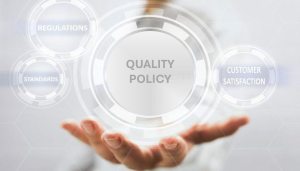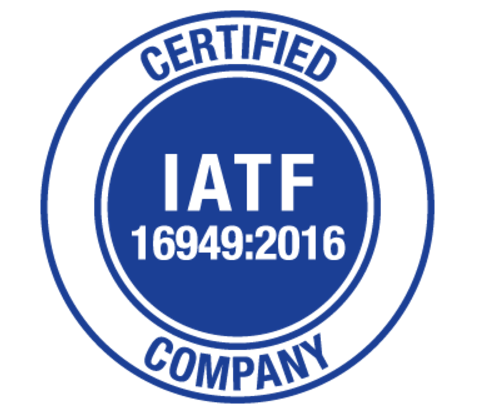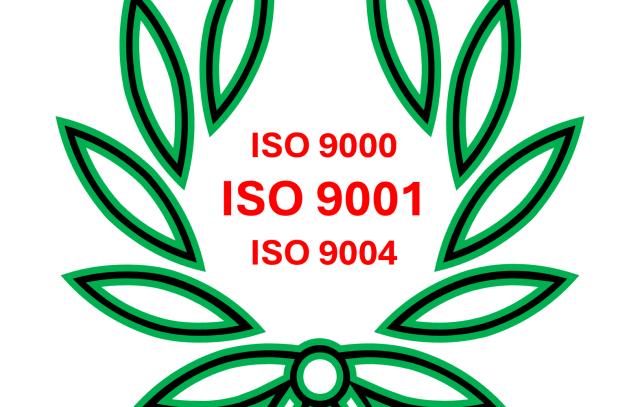What is the quality policy? What is it good for?
Why is it needed? Where does it appear as a requirement? What is its content about?

According to ISO 9001:2015 5.2. (and IATF 16949 5.2) a quality policy has to be established and communicated. It is the responsibility of the top management of the organization to establish, implement, and maintain the quality policy. Which – according to ISO 9001:2015 5.2.1 Establishing the quality policy –
- „is appropriate to the purpose and context of the organization and supports its strategic direction
- provides a framework for setting quality objectives
- includes a commitment to satisfy applicable requirements
- includes a commitment to continual improvement of the quality management system”
Every organization has its quality management system.
Quality management has to have its principles based on the „Quality management principles” of ISO 9000:2015 2.3.
These principles are customer focus, leadership, engagement of people, process approach, improvement, evidence-based decision-making, and relationship management.
The principles have been used as guidelines to create the ISO 9001:2015 requirement that the organization with its quality management system must fulfill.
The commitment to them appears as a quality policy, where management declares its intention to follow these guidelines to fulfill the standard’s requirements, keep focusing on them, and become accountable through them. Besides this, the quality policy is a statement that aligns with an organization’s purpose, mission, and strategic direction.
Also, according to the ISO: 9001 „5.2.2 Communicating the quality policy”: the quality policy
- „shall be available and maintained as documented information
- be communicated, understood, and applied within the organization
- be available to relevant interested parties”
The quality policy is a written document that has to be available, understandable, and applied by the organization.
The document can be found on the company’s website and in printed form on the walls of the company’s offices, where it is constantly visible.
How does it work in practice?
Let’s see some key objectives that can be included in the quality policy:
- focusing on customer satisfaction and success
- ensuring full compliance with regulatory and statutory requirements.
- producing the highest quality design and product with innovative technology
- maintaining a quality management system that ensures continuous improvement
- working according to the zero-defect principle
- maintaining sustainable processes
As we can see, companies formulate all the guidelines as a quality policy along with the way, they envision their operation. Compliance with and guaranteeing them are key factors to any company’s success.
Okay, the quality policy is done, and then what’s next? How can a company comply with the guidelines set in the quality policy?
First, the company defines those processes that can affect compliance with the guidelines. Then, it assigns indicators to these processes with which the performance of the processes can be monitored and evaluated. These indicators of course have target values,
If, for example, the company wants to evaluate to what extent the customer’s needs are met, the following indicators need to be assigned and monitored: number of customer complaints, types of customer complaints (field or 0km), ppm values, results of customer audits, service and warranty costs, product recalls, and the logistics, commercial and financial -related indicators.
Customers also evaluate their suppliers by different criteria including quality as a key factor. This rating system is called a „customer scorecard”.
Being aware of the results of internal and customer evaluations to target values of each indicator, the company will be able to define proper actions if the requirements are not met.
! Check the quality policy of the company you work for, if you haven’t done so yet. It can be found on the Intranet site or the walls of meeting rooms.
If you have it, read it. Be aware of its content. Can you see the signatures of top management representatives at the bottom of the document?
This means the commitment that ISO 9001: 2015 5.2.1 is talking about.
Do you have a vision for what you want your life to look like personally and professionally?
What area of your life would be worth to improve the most? Is it your friendship, relationship with your spouse or a family member, health, or career? What would be the guidelines for improving them? Would you achieve your desired goals, if you followed them? Would you commit to these guidelines?





